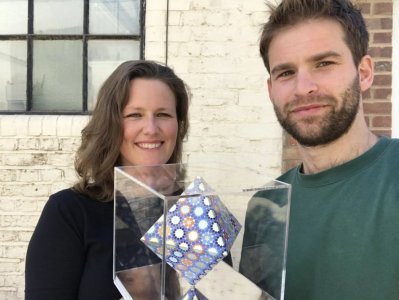stlukesguild
Well-known member
- Messages
- 2,990
An artist that I just today stumbled upon... and whose work I really love... is the Iranian-born, Samira Abbassy.

Samira's family moved from Iran to the UK when she was a child. Her parents repeatedly told her “We came here so that you could have an education”. She studied diligently but became obsessed with drawing at the age of 12.


She deeply studied Western Art History... but also Arab, Persian (Iranian) and Mughal and Hindi Art. She became fascinated with the cross-pollination between Western and Middle-Eastern Art.


Many of her works deal with the experience of being an Islamic Woman and an outsider... a stranger in a strange land. She eventually moved to New York, but admits that the culture shock from her initial move from Iran was far more traumatic than the move from London to New York. New York, she states, was actually far more accepting of her as a foreigner in that it is almost expected that everyone in New York is from somewhere else.


I find her work fascinating on several levels. My own work has been profoundly impacted by Islamic/Persian Art... both the patterns in the architecture and the miniature paintings in the illuminated manuscripts. Where the very term "decorative" has often been employed as a pejorative in Modern Art Education and Criticism, Middle-Eastern Art openly embraces this element. I am also fascinated with the rich sensuality of saturated colors employed by Abbassy and Islamic/Persian artists (as well as artists of the Renaissance, Modernism, Pop Art, and even Comic Books.


Samira's family moved from Iran to the UK when she was a child. Her parents repeatedly told her “We came here so that you could have an education”. She studied diligently but became obsessed with drawing at the age of 12.
She deeply studied Western Art History... but also Arab, Persian (Iranian) and Mughal and Hindi Art. She became fascinated with the cross-pollination between Western and Middle-Eastern Art.
Many of her works deal with the experience of being an Islamic Woman and an outsider... a stranger in a strange land. She eventually moved to New York, but admits that the culture shock from her initial move from Iran was far more traumatic than the move from London to New York. New York, she states, was actually far more accepting of her as a foreigner in that it is almost expected that everyone in New York is from somewhere else.
I find her work fascinating on several levels. My own work has been profoundly impacted by Islamic/Persian Art... both the patterns in the architecture and the miniature paintings in the illuminated manuscripts. Where the very term "decorative" has often been employed as a pejorative in Modern Art Education and Criticism, Middle-Eastern Art openly embraces this element. I am also fascinated with the rich sensuality of saturated colors employed by Abbassy and Islamic/Persian artists (as well as artists of the Renaissance, Modernism, Pop Art, and even Comic Books.




